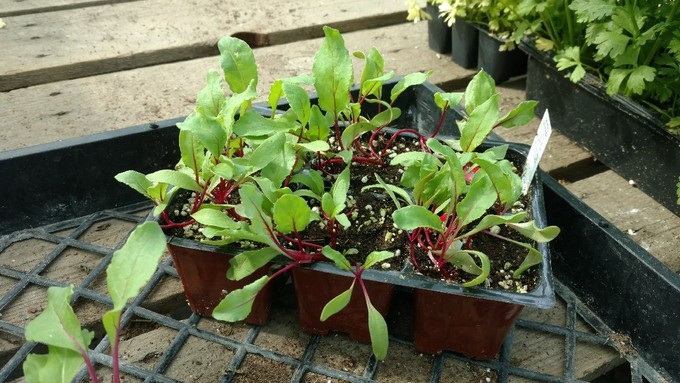
Start seeds for fall, winter favorites for transplanting after Labor Day

Chard and other cool-season favorites can be started from seed now for transplanting after Labor Day. Debbie Arrington
What can a gardener do during the hottest days of summer? Think about fall – and plant cool-season vegetables.
These autumn-loving greens and winter favorites may not go into the ground when it’s triple-digits outside, but they’re very comfortable starting life on your kitchen counter or in a sunny window.
The Dog Days of Summer – July 3 through Aug. 11 this year – correspond with Sacramento’s historically warmest weeks. “Dog Days” get their nickname from the ancient Greeks; this period marks when Sirius, the “Dog Star,” rises in the skies above the Northern Hemisphere. They knew when they saw that very bright star, it was going to get hot.
As we retreat indoors to air conditioning, it’s an opportunity to look over our seed inventory and start a new crop of little lettuces, broccoli, cabbages or peas.
Here’s advice from the UCCE master gardeners of Placer County, as shared by their master gardener neighbors in El Dorado County:
“Although it seems counter-intuitive, the Dog Days – particularly the latter part, i.e. now – is a good time to start seeds of broccoli, cauliflower, cabbages, and Brussels sprouts for the fall garden. You can plant the seeds in pots or flats, or they can be sown in a sheltered place in the garden.
“With the warm soil temperatures, the seeds sprout quickly,” add the master gardeners. “Keep them watered and you'll have young plants to transplant after Labor Day. This is a HUGE savings as the cost of transplants at nurseries has sky rocketed in recent years. Plus, your plants are likely to be more vigorous and healthier than those raised for mass production, with a greater choice in varieties.”
Due to increased interest in home vegetable gardening, seed for some popular varieties has been selling out. Order early.
“In addition (to planting), it's a good time to look over seed packets and purchase cool season veggie seeds if needed so you can be prepared,” say the master gardeners. “And ordering seed packets is a good ‘garden activity’ to do on a hot summer day.”
What are some cool-season crops that can be started now? All the brassicas (broccoli, cabbage, Brussels sprouts, kale, collards, etc.), greens (chard, spinach, leaf lettuce, head lettuce, etc.), root vegetables (radishes, turnips, carrots, beets, rutabagas, onions, etc.), and peas.
“Don't forget to order a few cool season flowers as well!” say the master gardeners. “These include sweet peas, violas, stock, cornflowers, and others, along with native California wildflowers like California poppies. Native wildflowers grow quite happily amongst the kale and radishes in a cool-season veggie garden!”
Comments
0 comments have been posted.Sacramento Digs Gardening to your inbox.
Sites We Like
Garden Checklist for week of May 5
Survey your garden after the May 4 rainstorm. Heavy rain and gusty winds can break the neck of large flowers such as roses. Also:
* Keep an eye on new transplants or seedlings; they could take a pounding from the rain.
* Watch out for powdery mildew. Warmth following moist conditions can cause this fungal disease to “bloom,” too. If you see a leaf that looks like it’s dusted with powdered sugar, snip it off.
* After the storm, start setting out tomato transplants, but wait on the peppers and eggplants (they want warmer nights). Pinch off any flowers on new transplants to make them concentrate on establishing roots instead of setting premature fruit.
* Trim dead flowers but not leaves from spring-flowering bulbs such as daffodils and tulips. Those leaves gather energy to create next year's flowers. Also, give the bulbs a fertilizer boost after bloom.
* Pinch chrysanthemums back to 12 inches for fall flowers. Cut old stems to the ground.
* Mulch around plants to conserve moisture and control weeds.
* From seed, plant beans, beets, cantaloupes, carrots, corn, cucumbers, melons, pumpkins, radishes and squash.
* Plant onion sets.
* In the flower garden, plant seeds for asters, cosmos, celosia, marigolds, salvia, sunflowers and zinnias. Transplant petunias, zinnias, geraniums and other summer bloomers.
* Plant perennials and dahlia tubers for summer bloom.
* Don’t wait; plant summer bulbs, such as gladiolus and tuberous begonias.
* Harvest cabbage, lettuce, peas and green onions.